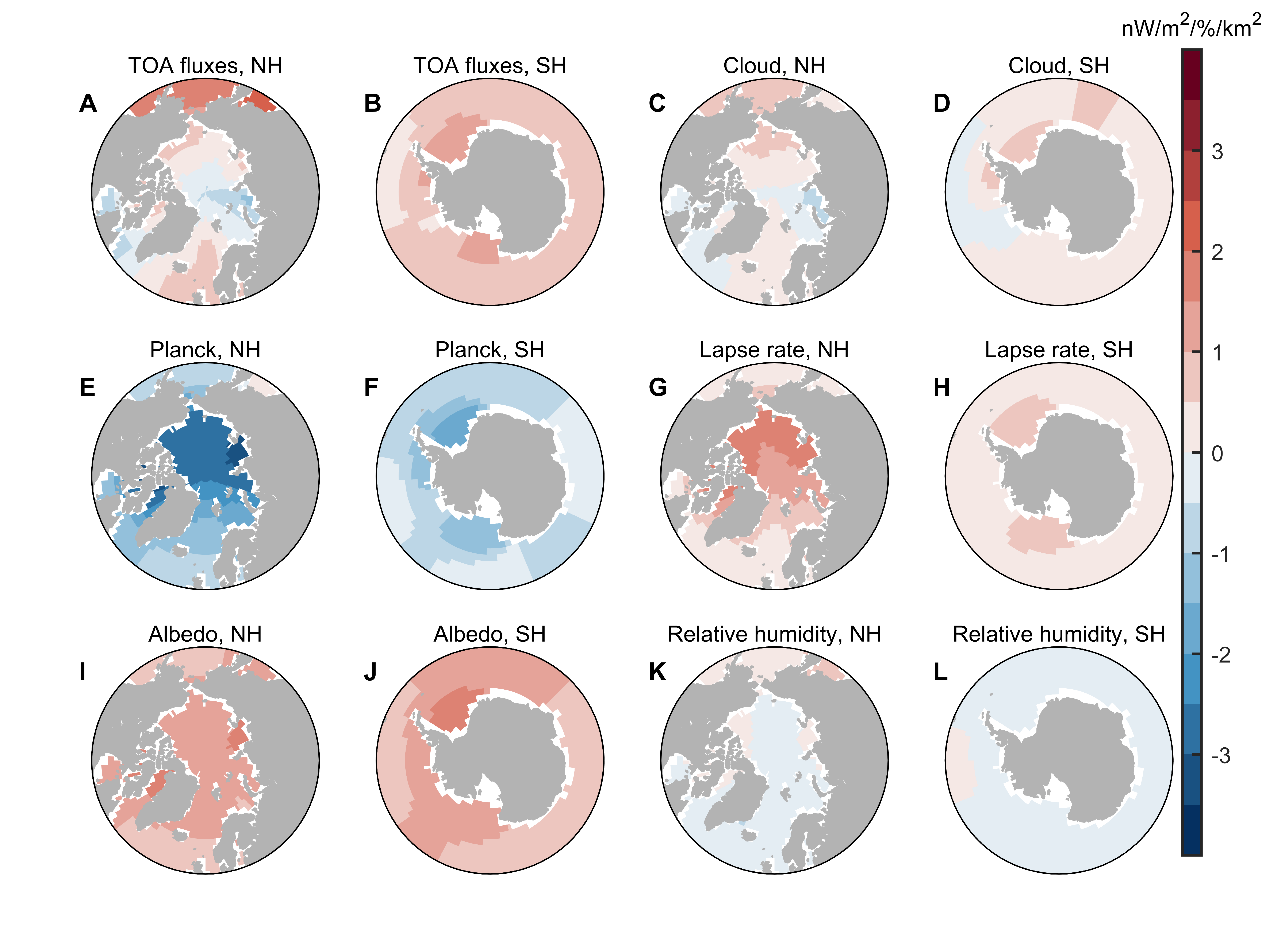Sea ice loss under global warming usually warms the Earth by reducing the earth’s surface albedo, so people usually expect that the radiative effect of sea ice loss always warms the earth. However, although sea ice loss under long-term global warming do create a radiative warming to the earth system, numerical experiments show that the time series of sea ice cover (SIC) anomalies are not well correlated with SIC radiative effect, due to the radiative effect of changes in SIC spatial distribution.
To understand the mechanism of the SIC pattern effect, the research performed a set of sea ice patch perturbation experiments, where the SIC is both increased and decreased within individual patches, and the response of the global radiative effect to regional SIC changes can be calculated. The results show that SIC-induced radiation anomalies at the top of the atmosphere are sensitive to the location of SIC reduction in each season, which qualitatively explains how and why the effect of sea ice loss on Earth’s energy budget is determined by its spatial pattern. Specifically, SIC-induced surface warming is greater in the Arctic regions, resulting in a more negative Planck feedback. Global low-level cloud cover responses to Arctic and Antarctic SIC reduction are also distinct, leading to more negative SIC-cloud feedback in Arctic regions. SIC-induced albedo feedback is sensitive to latitude due to inhomogeneous solar radiation at surface
On the other hand, the response of global TOA fluxes to SIC reduction depends on the season. There is little solar radiation in wintertime, so the surface albedo-induced radiation anomalies are greater during summertime. Moreover, SIC-induced surface warming is stronger in wintertime, leading to a stronger negative Planck feedback in wintertime. This asymmetry arises because the ice surface temperature is colder in wintertime while the water surface temperature is close to the ice melting point for all seasons, so the local temperature change induced by SIC reduction is also greater in wintertime. Therefore, the SIC-induced radiation anomalies tend to cool the Earth in wintertime and warm the Earth in summertime for both hemispheres.
As a result, the simulated radiative effect of SIC anomalies during 1980-2019 is dominated by variations in the spatial pattern of SIC, and the pattern effect is featured by hemispheric asymmetry.
The research is published on Science Advances in Feb. 2025. Prof. Chen Zhou, Mr. Qingming Wang, Prof. Lujun Zhang, Prof. Minghuai Wang and from the School of Atmospheric Sciences of Nanjing University are authors of this paper. The paper was supported by the National Key Research and Development Program and National Science Foundation of China. The numerical simulations in this paper were done on the computing facilities in the High Performance Computing Center of Nanjing University.

Figure 1. Sensitivity of global TOA radiation to regional SIC reduction, and its breakdown into contributions from individual radiative processes. (A-B) Response of annual mean global TOA radiation to regional SIC reduction in unit surface area (-∂R/∂SIC, calculated with Eq. 4). (C-D) Contribution of cloud changes. (E-F) Contribution of vertically-uniform temperature changes (Planck feedback). (G-H) Contribution of vertically-nonuniform temperature changes (lapse rate feedback). (I-J) Contribution of surface albedo changes. (K-L) Contribution of relative humidity changes. A positive value at a given location indicates that sea ice loss at that location leads to a radiative heating of the climate system, averaged annually and over the globe.
Reference:
Zhou, C.*, Q. Wang, I. Tan, L. Zhang, M. D. Zelinka, M. Wang, J. Bloch-Johnson, 2025: Sea ice pattern effect on Earth's energy budget is characterized by hemispheric asymmetry, Science Advances, 11, eadr4248, DOI: 10.1126/sciadv.adr4248.
